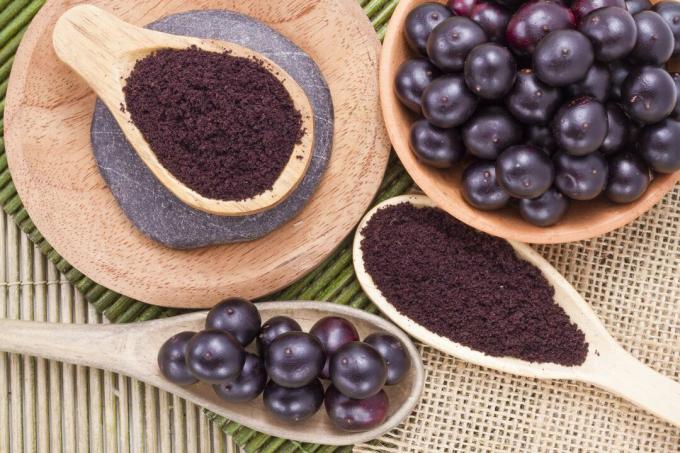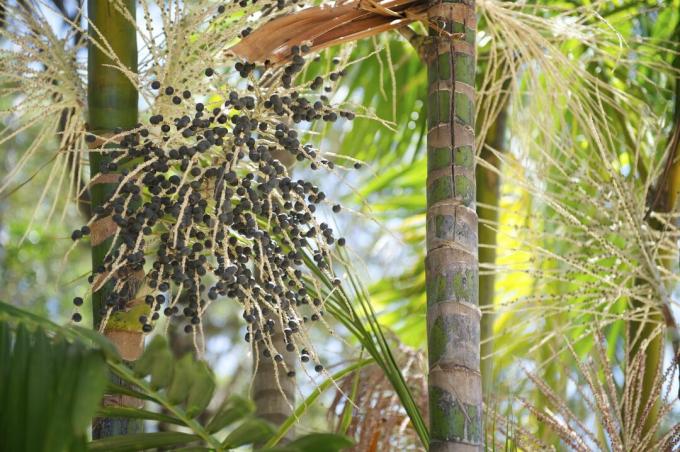The açai berry is considered to be particularly healthy and is currently very trendy. We get to the bottom of it and clarify what the miracle berry is all about.

In organic markets in particular, the açai berry has been on the shelves for a number of years, whether as a powder, muesli bar or ice cream. The black berry appears to be new superfood to have established. In this article you will find out what this trendy fruit is all about and where it actually comes from.
Açai berry: origin and properties
The açai berry is the fruit of a cabbage palm (Euterpe oleracea), which is native to the humid valleys and flood plains of the Amazon basin. The multi-stemmed palm reaches a height of up to 25 meters and a trunk diameter of just up to 20 centimeters. It needs a very warm and humid climate with at least 21 °C and more than 70% humidity. The deep violet to black fruits hang in thousands on long and heavily branched inflorescences. Once a year, each trunk of the cabbage palm bears up to six kilograms of fruit, which has to be laboriously harvested by hand. The açai berry is actually a stone fruit, the stone of which takes up about 90% of the fruit, so that there is hardly any pulp left for further processing. The pulp and skin are dried, mashed, or boiled to make powder or pulp. However, the fruits can hardly be stored, which is why you cannot buy fresh produce outside of South America. However, it has a high fat content and therefore a high nutritional value, which is particularly important for the inhabitants of the rainforests. Açai hardly tastes sweet, its taste is considered to be creamy-fatty to earthy and nutty. In the Amazon it is an everyday staple and with its extremely high antioxidant content it is even considered an anti-aging agent.

What speaks for the acai berry?
In fact, the Açai not only has a high nutritional value with about 250 kilocalories per 100 grams - in Powdered form even 500 kilocalories - and the digestive fiber is also surprisingly high held before. Açai also contains plenty of vitamins A, C and iron. The dark coloring dye anthocyanin is present in large quantities and has a cell-protecting effect as a scavenger of free radicals. Their high health value is therefore undisputed. In all kinds of cosmetics and dietary supplements you can buy the Açai at exorbitant prices. Compared to other local fruits, however - like the Aronia or chokeberry (Aronia melanocarpa) – but it doesn’t fare much better.
What speaks against the acai berry?
Unfortunately, açai products have had a long, climate-damaging journey behind them when they finally reach our shelves. In addition, due to the high demand, entire plantations are now being created to satisfy the European hunger for superfoods. Similar to oil palms, rainforests are now giving way to monocultures of the cabbage palm and the crops also need regular irrigation. For these reasons, it is better to rely on regionally produced ones blueberries (Vaccinium corymbosum) or just fall back on aronia, which put significantly less strain on the climate and the wilderness and are just as healthy at the same time.

If you are interested in a superfood that you can also grow in your own garden, we recommend our special article on goji berry.
